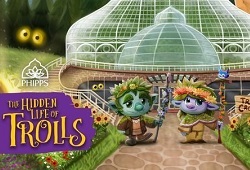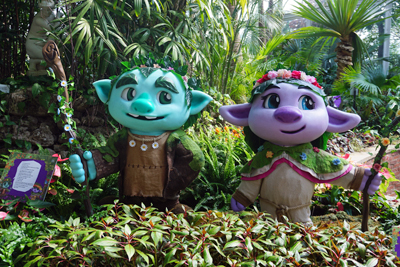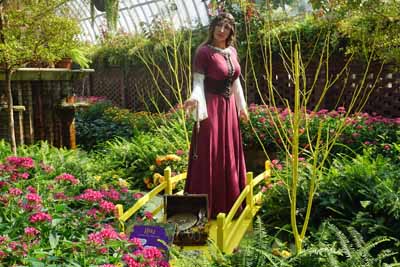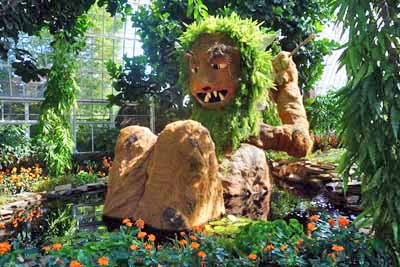
The poet Bragi, who lived in Norway during the late ninth century, was traveling through a forest late one evening when he happened upon a troll woman who asked where he was going. “Trolls call me moon of the dwelling-Rugnir, giant’s wealth-sucker, storm-sun’s bale, seeress’s friendly companion, guardian of corpse-fjord, swallower of heaven wheel,” she added regarding herself. “What is a troll other than that?” It was, from a historical perspective, the first encounter between a troll and a human ever recorded.
Trolls continued to appear throughout Scandinavia afterwards. The large swath of land in Northern Europe that encompasses Denmark, Norway, and Sweden – and more broadly includes Finland and Iceland – was a pre-industrial society based on farming and fishing at the time. Despite the large size of the region, as well as the forests, mountains, lakes, rivers, and tundra that dot the vast landscape, trolls were part of the folklore and natural surroundings everywhere, regardless if one lived in a small village in the south or isolated farmlands in the north.
Over a thousand years later, trolls can now be found around the world. They live in the animated creations of DreamWorks, have attacked students at Hogwarts School of Witchcraft and Wizardry, populated regions of Middle-earth, and nestle in the imaginations of both the young and the old alike. During the summer of 2021, trolls even found their way to Pittsburgh, Pennsylvania, where they temporarily created a home for themselves at the Phipps Conservatory, hiding in plain sight within the botanical gardens as part of a special Hidden Life of Trolls exhibit.
Trolls were often found in forests or mountains and embodied the forces of nature or drew their strength from it,” Jordyn Melino, associate director of exhibits, explains on The Hidden Life of Trolls Blog. “This connection to nature and innate love for nature really resonates with Phipps.”
The idea for having trolls take over the Phipps Conservatory originated with president and CEO Richard Piacentini after watching a film of the mythical creatures with his children. Melino was then recruited to craft an exhibit that not only featured trolls from existing folklore but two specially-created mascots named Fen and Ivy to act as Phipps Conservatory guides.
Canadian artist Piper Thibodeau was tasked with bringing the pair to life while local Pittsburgh design and fabrication studio Visionary Effects created two-dimensional animatronic versions of Fen and Ivy based on Thibodeau’s illustrations. Other trolls within the exhibit were crafted by another Steel City company, Tolin FX.
“When I’m working on a project for Phipps, one of the goals I always keep in mind is Phipps’ mission statement and commitment to sustainability,” founder Steve Tolin explains. “So when I was creating the sculpture of the troll head, I tried to start with materials that are easily recycled or turn right back into dirt.”
One of Tolin’s creations is Hilda, a beautiful woman with a crown of flowers and flowing red dress – as well as a tail. Hilda is actually a “huldra” from Norwegian folklore, a mythical human who could be a friendly, helpful guide through the forest when she wanted, while at other times a temptress who lured young men into the mountains where she forced them to marry her before turning into an old woman. Within the Sunken Garden at the Phipps Conservatory, Hilda is seen offering a bounty of treasurers to whoever wishes to follow her, although her true intentions are unknown.
“She has a serene, inviting expression on her face, but upon a second look, it’s actually dubious, if not somewhat sinister,” Steve Tolin says of Hilda.
While Tolin’s creations are recyclable, the large, six-eyed Lief in Palm Court is comprised entirely of living plants, with the exception of his face, which is made from dried flora. Plants were also used to create the hair on the troll Aegir’s head, while Bjorn wears a coat made from oak leaves, a beard constructed from dried grass, and a body crafted from staghorn fern.
“I really like that we’re using materials from onsite,” exhibit associate Mary Lou Linton-Morningstar explains. The same holds true for what is arguably the centerpiece of The Hidden Life of Trolls, a troll taking a bath in the South Conservatory.
Sitting in a pond with its legs folded and knees protruding from the water, the troll measures ten feet tall and eleven feet in length from it back to its knees. Like with Lief, this troll’s hair and beard is comprised of planted ferns. In addition to material readily available at Phipps Conservatory, Jordyn Melino scoured a bike trail for the right tree bark to construct eyebrows on the creature.
One of the troll’s arms reaches behind him, holding a tree branch to scratch its back. “The branch came out of my mother-in-law’s yard, from a tree that my husband planted ten years ago,” Jordyn explains. “It was perfect for this.”
Another highlight of The Hidden Life of Trolls is a readily recognizable mythological staple – an old woman under a bridge who insists that everyone must answer a riddle before they can pass. Created by Visionary Effects, Bridget – as the troll is named – is animatronic, just like Fen and Ivy. When visitors wave their hands over motion sensors, Bridget’s mouth moves as she asks one of her riddles. To help with answering, clues are scattered around the area, which also features a campfire. As with most of the props found in the exhibit, the bridge is made from wood and lined with actual rocks and plants.
“All at once the trolls arrived,” Peter Christen Asbjørnsen wrote in his seventeenth century collection of Norwegian folklore. “Some were big, and some were small; some had long tails, and some had no tails; some had long, long noses, and they ate and drank and tasted everything.”
During the summer of 2021, those same trolls arrived at the Phipps Conservatory and Botanic Gardens and felt just as at home in Pittsburgh as they have for centuries in Scandinavia.
Anthony Letizia





